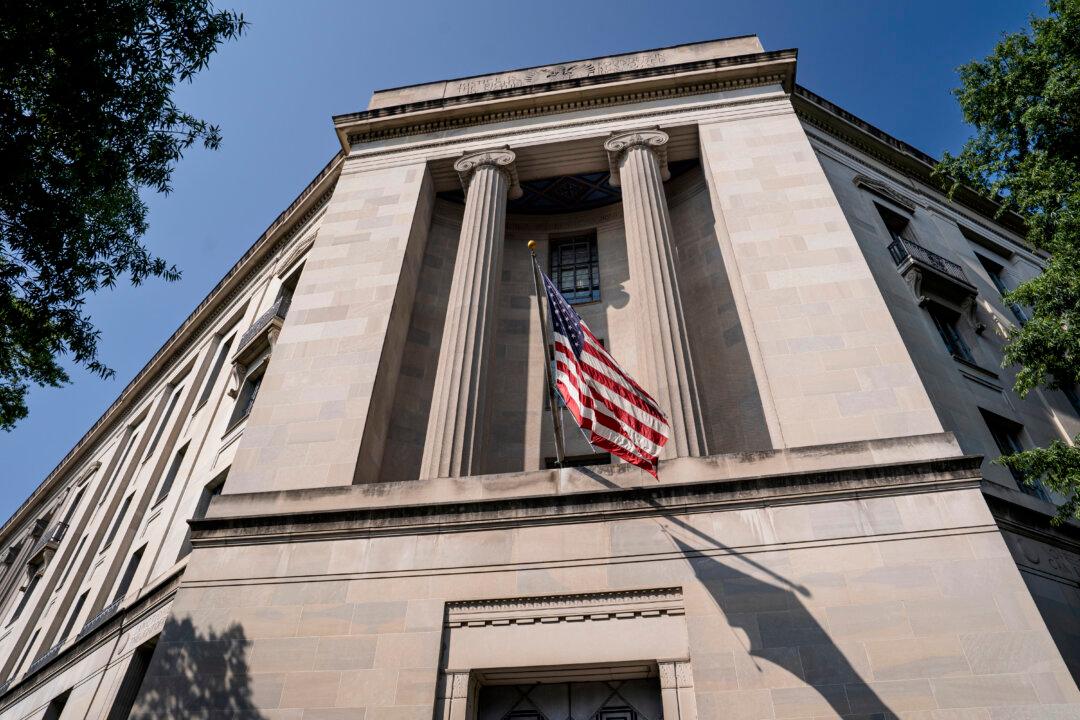Wall Street’s main indexes tumbled at the opening bell on Sept. 20, as concerns about the pace of economic recovery, mixed with fears about financial contagion from China’s Evergrande troubles, put selling pressure on risk assets.
At the opening bell, the Dow Jones Industrial Average fell by 125.16 points, or 0.36 percent, to 34,459.72. The S&P 500 opened lower by 30.04 points, or 0.68 percent, at 4,402.95, while the Nasdaq Composite dropped by 285.83 points, or 1.90 percent, to 14,758.14.
By 11:06 a.m. New York time, the Dow was trading down by around 490 points, or 1.42 percent; the S&P 500 was trading down by around 71 points, or 1.61 percent; and the Nasdaq was lower by around 318 points, or 2.1 percent, according to Tradingview.com market data.
The VIX volatility index, dubbed the Wall Street fear gauge, spiked by 4.86 points, or 23.35 percent by 9:52 a.m. New York time, while U.S. Treasurys and gold saw inflows of capital, suggesting safe-haven assets were in play.
While the Dow fell more than 970 points at its low point, the market recovered slightly before the closing bell. The Dow finished down 1.8 percent, or 614 points. The S&P 500, the broadest measure of Wall Street, closed down 1.7 percent, while the Nasdaq Composite fell 2.2 percent. Meanwhile, the VIX added 4.9 points, or 23.6 percent for the day.
The market gyrations come amid concerns over the spillover risk to the global economy from Chinese property group Evergrande’s troubles and as investors look to the Federal Reserve’s policy meeting this week for clues about the central bank’s much-anticipated tapering of stimulus efforts.
Meanwhile, the Fed is expected to lay the groundwork for reducing the pace of its bond-buying program at the Federal Open Market Committee (FOMC) meeting on Sept. 21 and 22, though economists generally don’t expect any announcements until subsequent meetings later in 2021.
“Soft economic data and a less-than-expected increase in consumer prices give the Fed the ability to defer any announcement on tapering asset purchases. Expect them to kick that can down the road to the November meeting, allowing them to see another round of monthly economic releases to better gauge the strength of the economic rebound in the face of an ongoing pandemic,” Bankrate Chief Financial Analyst Greg McBride told The Epoch Times in an emailed statement.
Since roughly the onset of the pandemic crisis, the Fed has been buying around $120 billion per month of Treasury and mortgage securities, helping to buoy markets but also contributing to inflationary pressures.
“The decline in assessments of buying conditions for homes, vehicles, and household durables left all three near all-time record lows,” Richard Curtin, the survey director, said in a statement, noting that the drops were “due to spontaneous references to high prices.”
Inflation has emerged as a key concern amid the economic recovery, rising faster than wages and eroding Americans’ buying power. While Federal Reserve officials have maintained that inflation is temporary and that the pace of price hikes will taper off, they’ve acknowledged the risk that upward price pressures may be more persistent.





